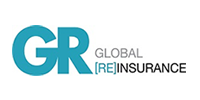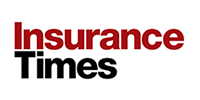There is aggressive competition in the home insurance market as the pattern of distribution changes Defaqto reviews the market and a selection of products available
Once the domain of brokers and a few upstart direct writers, it now appears that everyone is trying to get on the home insurance bandwagon.
Almost every major supermarket chain, and some big retailers, now sell home insurance. Even Richard Branson joined the fray, with the recent launch of Virgin Money's home insurance policy.
In September 2003 the Royal Bank of Scotland (RBS) acquired the Churchill insurance group, giving the bank control of some of the largest brands in the home insurance world - including Direct Line, Churchill, AMP Pearl, Prudential, and the broker brand NIG, not to mention underwriting for other big names such as Tesco and Nationwide.
Latest figures from RBS show that it has around 5.2 million home insurance policies in force - potentially as much as a quarter of the UK market.
Aggressive growth
Alongside the rapid expansion at RBS, Halifax/Bank of Scotland (HBOS) has been growing its business, taking over the renewal rights to its home insurance book from Royal & SunAlliance in January 2004, and aggressively growing its own policies through major advertising campaigns under both the Halifax and esure brands.
It is clear that for the next few years the big players in the UK home insurance market will be the brands and bancassurers rather than the traditional insurers.
Use of the internet as a distribution and selling tool for home insurance is expanding rapidly. A quarter of all policies analysed by Defaqto can be bought online.
A survey by Ebenchmarkers claims the number of policies sold online is growing by over 75% a year, with 230,000 policies being bought on the net in the year to April 2003.
According to the Office for National Statistics almost half of all households now have internet access at home, and around two thirds of all adults have used the web at some time. Clearly, distribution online is set to grow, but it is not always as easy as it first appears. The advent of FSA regulation in January 2005 will impose the need for some rigorous procedures to ensure that online sales meet the standards required.
Already this year Defaqto has highlighted issues with a number of insurers mis-selling policies online, or giving factually incorrect details about their cover to purchasers - something which the FSA is unlikely to find acceptable.
The overall levels of home insurance cover have experienced very little dramatic change over the past year. There have, however, been lots of small changes. Insurers now typically review their policies two or three times a year, using the opportunity to "tweak" cover to make policies more competitive.
What is being seen are gradual improvements in the levels of cover. Some limits appear to becoming industry standards. For example, £2m is now the liability limit for around two thirds of home policies, £50,000 legal expenses cover is pretty much standard.
Frequent changes
Other changes identified are a move towards 60-day unoccupancy periods - almost 40% of policies now offer this as standard - perhaps an acceptance that many people can now afford to take longer holidays. Most other inner-limits appear to be creeping up, particularly in the area of valuables and single articles.
In summary, the UK home insurance market is seeing changes happening more and more frequently, and new distributors (but not underwriters) appear every month. The market distribution pattern is swinging from one of insurer domination to one in which brands are beginning to control distribution and bancassurers pulling the strings. The next few years promise to be very interesting as this new business model emerges.
Hosted by comedian and actor Tom Allen, 34 Gold, 23 Silver and 22 Bronze awards were handed out across an amazing 34 categories recognising brilliance and innovation right across the breadth of UK general insurance.












































